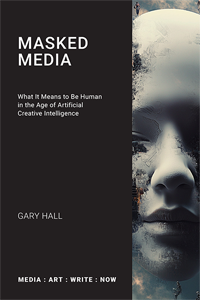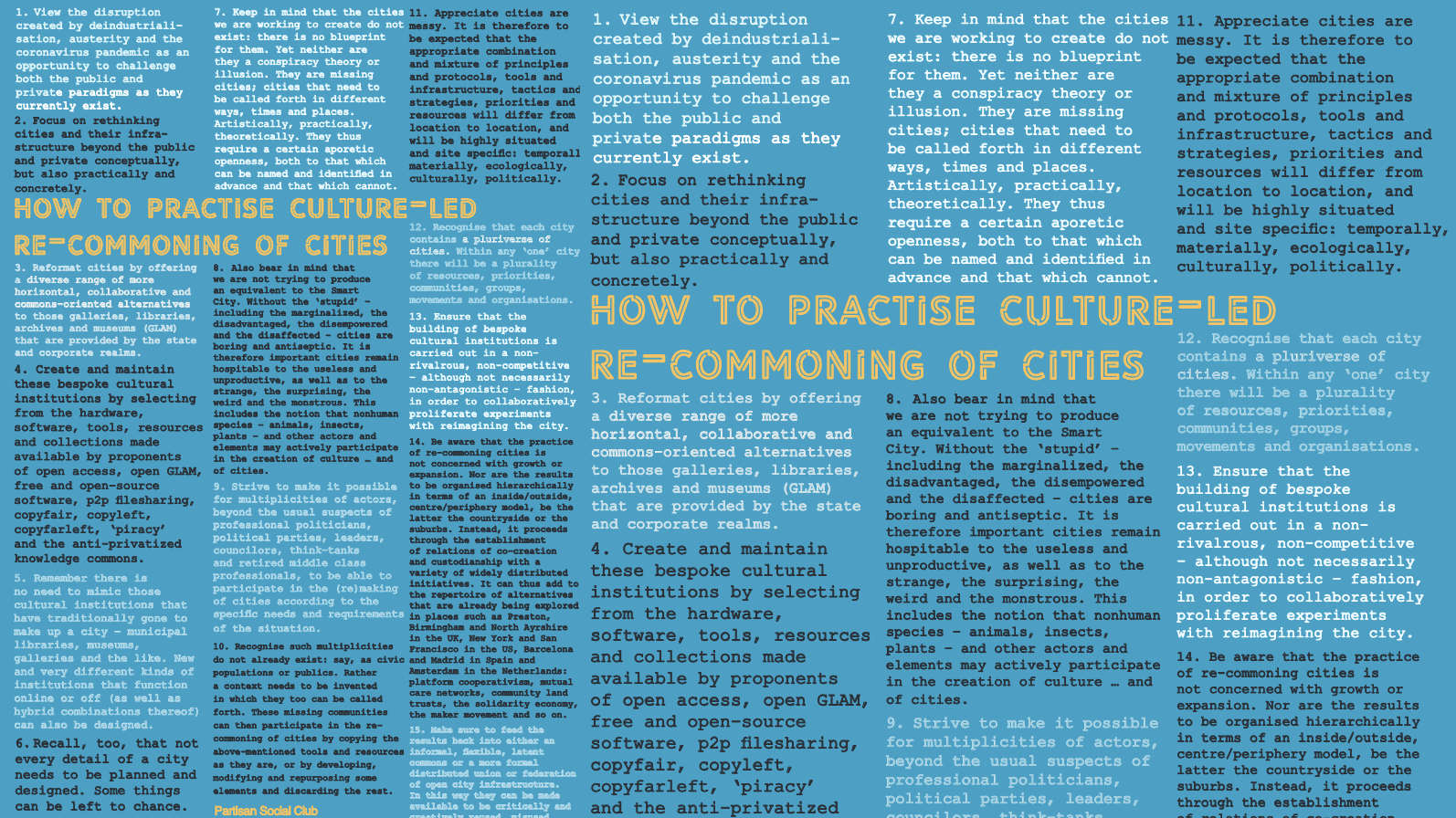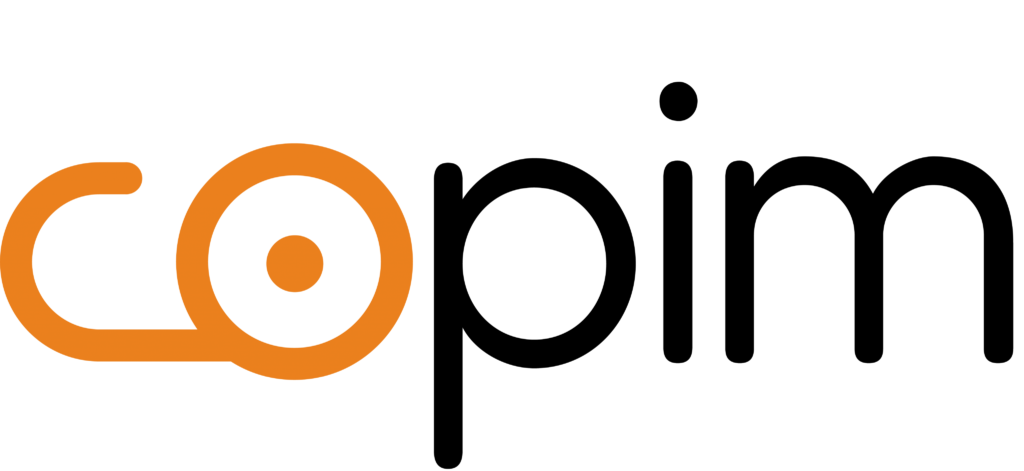The open scholarship full disclosure initiative: a subversive proposal
 Monday, May 2, 2011 at 12:45PM
Monday, May 2, 2011 at 12:45PM In 1994 the cognitive scientist Stevan Harnad made a self-professed ‘subversive proposal’. He suggested that those authors who did not want to sell their writing for profit – a category Harnad saw most scientists and scholars falling into - should make copies of their work freely available in globally accessible online archives. Doing so would enable those authors to both publish their research and make it available to be read all over the world by its intended audience of fellow scientists and scholars. It would also remove one of the chief barriers otherwise erected between those authors and their prospective readers: namely the price-tag that had been placed on their writing in the era of ink-on-paper publication to cover the costs of its reproduction. Some sense of the impact of Harnad’s proposal can be gained from the fact that, although Peter Suber is able to begin his ‘Timeline of the Open Access Movement’ as early as 1966, it’s Harnad’s ‘subversive’ intervention from 1994 that is identified as the occasion when self-archiving was first proposed.
From there the idea eventually developed into what is today known as Green Open Access. This is where authors do make their research - which may or may not have already been published elsewhere in a journal or with a publisher of the author’s own choosing – available online for free to anyone with access to the Internet simply by self-archiving digital copies of it in central, subject or institutionally-based online repositories, such as arXiv or PubMed Central. Indeed, such is the general acceptance of Harnad’s subversive proposal and the Green Road to open access that on March 11, 2009 US President Barack Obama signed into law a bill making permanent the National Institutes of Health Public Access Policy. This mandates that any research funded by the NIH is deposited in PubMed Central within a year of its publication.
Toward the end of this piece I’m going to make a proposal of my own. It’s intended as a modest supplement to that of Harnad, yet I believe it has the potential to be even more subversive. Among other things, it has radical implications for the very system that’s used to provide quality control when it comes to publishing, not just in open access repositories and online journals (the latter being Gold Open Access as opposed to the Green of self-archiving), but in paper journals too. I’m referring to peer review and editing, particularly by established journals of known quality. However, before I make this second subversive proposal – which I’m provisionally calling the ‘Open Scholarship Full Disclosure Initiative’ – I want to say something about where the motivation for it comes from. While it’s partly inspired by Harnad, it’s influenced more directly by two recent articles: a piece of journalism by Ben Goldacre on the relationship between funding source, impact factor and journal prestige in medical research; and an academic essay on cultural studies and the politics of journal publishing by Ted Striphas.
Goldacre is a medical doctor who writes the Bad Science column in the UK newspaper The Guardian. On February 14, 2009 he published an item titled ‘Funding and Findings: The Impact Factor’. In it Goldacre discusses a study in the British Medical Journal he describes as being ‘quietly one of the most subversive pieces of research ever printed’. I think he may be right. The research in question, by Tom Jefferson et al., examined every study of the influenza vaccine. Specifically, it used statistics and quantitative analysis to investigate whether the source of funding ‘affected the quality of a study, the accuracy of its summary, and the eminence of the journal in which it was published’. According to Goldacre it’s common knowledge that, when it comes to research in medicine, industry-funded studies are ‘more likely to give a positive result for the sponsors' drug'. This was certainly found to be the case here with regard to the research on influenza vaccines. But by looking at where studies are published, what this new research by Tom Jefferson and his colleagues revealed is that the impact factor for industry-funded studies is more than twice that of government-funded studies; and that studies sponsored by the pharmaceutical industry are far more likely to get into the larger, more prestigious journals of supposedly known quality than studies sponsored by the government.
When it comes to the journal impact factor – i.e., how often, on average, research in a given journal is subsequently cited in other research publications according to the ISI Web of Science database - the average for the 92 studies funded by government that were looked at was 3.74, while for the 52 studies with partial or total industry funding it was a much more significant 8.78; and this despite the fact that there was no difference between the two in terms of ‘methodological rigour, or quality’, or ‘where people submit their articles’. This leads Goldacre to conclude that ‘an unkind commentator’ might put forward at least one reason why, for all the supposed rigour of the academic editing and peer-review system of quality control, industry trials might be more successful with their submissions to journals which have higher impact figures and which, as a consequence, are considered to be the ones publishing the best quality articles: it’s quite simply because many ‘journals are businesses, run by very huge international corporations, and they rely on advertising revenue from industry, but also on the phenomenal profits generated by selling glossy “reprints” of studies, and nicely presented translations, which drug reps around the world can then use'.
Some of the issues raised in Goldacre’s short piece on funding sources and their relation to impact factor and the perceived prestige of journals tally with the work of a cultural studies scholar from Indiana University in the US, Ted Striphas. Striphas has undertaken some extremely interesting research into the political economy of academic journal publishing in general, and that of cultural studies’ journals in particular. In his text, ‘Acknowledged Goods’, Striphas shows how cultural studies has something of a blind spot when it comes to many of the material conditions and practices which make it possible as a field. Perhaps nowhere is this more the case than with regard to the relationship between cultural studies and the academic book and journal publishing industries – especially as those industries have become increasingly consolidated and profit-intensive in recent the years. Striphas provides the example of Taylor and Francis/Informa, whose cultural studies list currently features over 70 journals. Among them are some of the most highly respected titles in the field, including Cultural Studies, Continuum: Journal of Media and Cultural Studies, Communication and Critical/Cultural Studies, Inter-Asia Cultural Studies, Feminist Media Studies, and Parallax. And yet it might come as something of a shock to many of those in cultural studies - especially those who have published in their journals or peer-reviewed manuscripts for them - to learn that:
One of Informa’s subsidiaries, Adam Smith Conferences... specializes in organizing events designed to open the former Soviet republics to private investment. Other divisions of the company provide information, consulting, training, and strategic planning services to major international agricultural, banking, insurance, investment, pharmaceutical, and telecommunications corporations, in addition to government agencies. Take Robbins-Gioia, for instance. The United States Army recently tapped this Informa subsidiary during an overhaul of its command and control infrastructure. The firm was brought in to assess how well the Army had achieved its goal of ‘battlefield digitization’. The United States Air Force, meanwhile, tapped Robbins- Gioia when it needed help improving its fleet management systems for U-2 spy planes. (Striphas)
It may seem unfair to single cultural studies out like this. After all, it’s not the only field to suffer from something of a blind spot when it comes to the politics of its own publishing practices. Far from it. What makes the existence of such a blind spot so noteworthy in this particular instance is that cultural studies prides itself on being a ‘serious’ political project, as one of its most influential exponents, Stuart Hall, puts it. According to Hall, the political cultural studies intellectual has a responsibility to ‘know more’ than those on the other side; to ‘really know, not just pretend to know, not just to have the facility of knowledge, but to know deeply and profoundly’. If so, then as far as Striphas is concerned, this injunction quite simply has to include knowing more about ‘the formidable network of social, economic, legal, and infrastructural linkages to the publishing industry that sustains’ cultural studies and its politically engaged intellectuals, and shapes the conditions in which their knowledge and research ‘can – and increasingly cannot – circulate’. This is information that can be ignored only at the cost of the integrity of cultural studies’ politics, he insists.
As someone who identifies with cultural studies to a large extent, I’ve been concerned for some time now with the way in which many cultural studies intellectuals, who are otherwise keen to wear their political commitment on their sleeves, are noticeably less keen when it comes to interrogating their own politico-institutional practices. The marked lack of interest the majority of those in the field have shown in making their research and publications available open access is a case in point.
Why, given the often overtly radical nature of the content of their work, have those in cultural studies been so reluctant to challenge what John Willinsky describes as the ‘complacent and comfortable habits of scholarly publishing’ in this way? After all, by making the research literature freely available to researchers, teachers, students, union organisers, NGOs, political activists, protest groups, public libraries, community centres and the wider public alike, on a worldwide basis, open access is frequently positioned as having the potential to break down some of the barriers between the institution of the university and the rest of society, as well as between countries in the so-called ‘developed’, ‘developing’ and ‘undeveloped’ worlds. These are all objectives most of those who identify with cultural studies as a political project would presumably be in favour of, given that just as important as knowing more than the other side, according to Stuart Hall, is the political intellectual’s responsibility to transmit ‘those ideas, that knowledge’, to others. Yet while other movements and practices associated with digital culture and the open dissemination of knowledge and information, such as Creative Commons, free software, open source and peer-to-peer file-sharing, have often been regarded from a cultural studies perspective as providing models for new regimes of culture, new kinds of networked institutions, and even for new forms of social and political organisation, the open access movement has had comparatively little impact on the field to date.
This is all the more surprising when one considers that compared to, say, the task of constructing an ‘open source society’ or forging an organic connection with a larger emerging historical movement, making copies of their research and publications freely available in globally accessible online repositories or journals is something that is relatively easy for the majority of those in cultural studies to actually bring about. Why, then, have those in the sciences, such as Stevan Harnad, proved to be the more apparently progressive, institutionally, socially and politically, in this respect?
Interestingly, Goldacre and Striphas both end their articles with suggestions for future action. For Goldacre, the ideal would be for all drugs research to be made ‘commercially separate from manufacturing and retailing’ and for all journals to be ‘open and free’. In the meantime, as academics are already ‘obliged to declare all significant drug company funding on all academic articles’, he follows Jefferson et al. in proposing that ‘since their decisions are so hugely influential’, all editors and publishers should be asked to ‘post all their sources of income, and all the money related to the running of their journal’, once a year. Striphas, in turn, emphasizes the importance of delving below the surface to discover just who the ‘parents and siblings’ of academic journal publishers are, and what other activities they are involved in. To push the point home he cites as a final example Reed Elsevier, one of the main journal publishers in both the ‘hard’ and social sciences. Until as recently as 2007, Reed Elsevier was facilitating the global arms trade through its event planning arm, Reed Exhibitions, who ‘staged the annual Defense Systems and Equipment International (DSEi) event in the London Docklands, and similar events worldwide’. Indeed, Elsevier was motivated to distance itself from the arms trade only after organized action on the part of ‘Campaign Against Arms Trade, along with groups of scholars associated with The Lancet, Political Geography, and other Elsevier journals’. This leads Striphas to suggest that, by working collectively, it may be possible to put pressure on other academic journal publishers to change their practices, too, no matter how large they may be.
So, responding to both the political and pragmatic undertones of these two pieces, my own ‘subversive proposal’ is as follows: that we, as academics, authors, editors, librarians, publishers and so on - not just in medicine and cultural studies, but in the wider arts and humanities, sciences and social sciences - come together to establish an initiative whereby all academic editors and publishers are indeed asked to make freely available, on an annual basis, details of both their sources of income and funding, and of all the sources of financial income and support pertaining to the journals they run. Furthermore, as part of this initiative, I propose we set up an equivalent directory to the DOAJ and SHERPA/RoMEO directories - only in this case documenting all these various sources of income and support, together with information as to who the owners of the different academic journals in our respective fields are and, just as importantly, the other divisions, subsidiaries and activities of their various companies, organisations, institutions and associations.
Let me quickly stress that I’m not suggesting all corporately owned journals are the politically co-opted tools of global capitalism, while smaller, independently scholar-produced journals, or those published on a non-profit basis by university presses, learned societies and scholarly associations somehow escape all this. None of this emerges out of a sense of moralism on my part. Some of my best friends are the editors of journals published by large, for-profit, multinational presses, and I am myself on the editorial board of a number of Taylor and Francis journals. It’s not therefore my intention to imply that anyone can be situated sufficiently outside of the forces of global capital to be completely politically and ethically ‘pure’ in this respect. (No one is innocent, as the Sex Pistols used to say.)
Nevertheless, I believe such a campaign for ‘full-disclosure’ would be of huge assistance in furnishing scholars and researchers in all areas, the humanities, the sciences, and the social sciences, with the knowledge that will enable them to make responsible political and ethical decisions as to who they want to publish with or undertake peer review for - and thus who they want to give their free labour to. For instance, as a result of this initiative and the information obtained some scholars may take a decision not to subscribe to, publish in, edit, peer review manuscripts or otherwise work for academic journals owned by multinationals involved in supporting the military; or journals that have high library subscription charges; or indeed journals that refuse to endorse, as a bare minimum, the self-archiving by authors of the refereed and accepted final drafts of their articles in institutional open access repositories. (Or they may of course decide that none of these issues are of a particular concern to them and continue with their editorial and peer-review activities as before.)
At the very least, I believe that such an ‘Open Scholarship Full Disclosure Initiative’ would encourage both the editors and publishers of journals, and the owners of academic journal publishers and their siblings and subsidiaries, to behave more responsibly in political and ethical terms. What’s more, it would be capable of having an impact even if the editors and publishers of the larger more established and prominent journals refused to play ball and provide full disclosure themselves. I say this for a number of reasons: because such an initiative would raise awareness of the politics of journal and publisher funding and ownership more generally, regardless; because those editors and publishers who don't provide full disclosure would risk appearing as if they have something to hide; and because it would also hopefully have the effect of encouraging more scholars to conduct research into where the funding of such journals comes from, who their parent companies, institutions and organisations are, and what other activities they are involved in and connected to, and to make the results of their research widely known.
It’s also worth emphasising that such an initiative would not require a huge amount of time and effort on our collective part. After all, ‘Reed Elsevier, Springer, Wiley-Blackwell, and Taylor & Francis/Informa... publish about 6,000 journals between them.’ So to cover 6,000 journals, or somewhere between a quarter and a fifth of all peer-reviewed journals, we only need to research and disclose details of four corporations! That’s one thing we have to thank the processes of conglomeration and consolidation in the academic journal publishing industry for at least.
(The above text first appeared in Against the Grain, June, 2009)







Reader Comments (1)
I like this proposal! Best of luck to you!